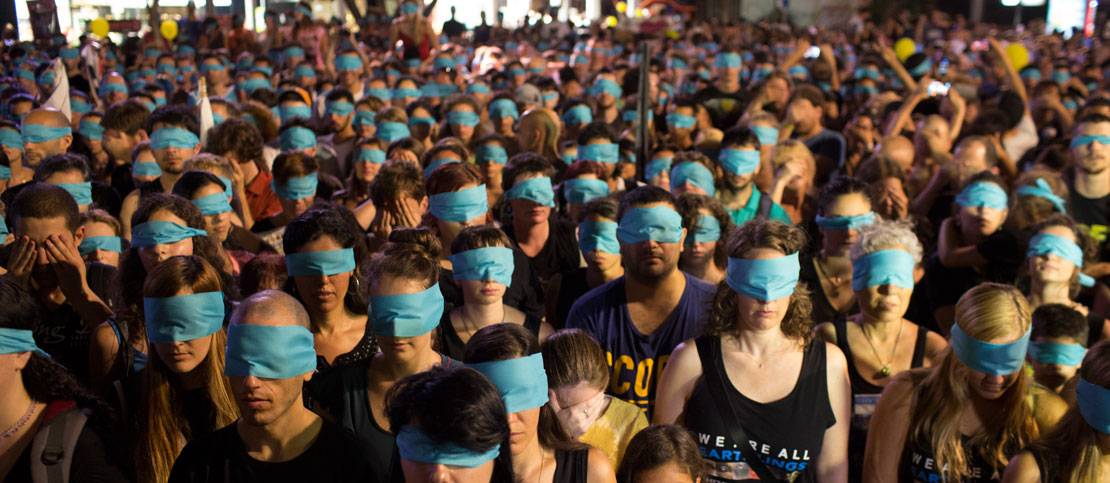“Activestills: Photography as Protest in Palestine/Israel,” edited by Vered Maimon and Shiraz Grinbaum, Pluto Press (2016)
The first time I truly began to grasp the potency of photojournalism was on Tel Aviv’s Rothschild Boulevard in June 2011. It was barely a few days after a group of young Israelis decided to pitch tents on the city’s most recognizable thoroughfare, launching what would soon come to be known as the social protest movement.
By the end of that first week, Rothschild began to look like a cross-section of Jewish Israeli civil society, with activist groups from every strain imaginable setting up shop along the boulevard’s outer edges. Zionist youth groups tabled alongside environmentalists who handed out flyers, radical right-wing settlers pitched their tents next to guitar-toting hippies.
I strolled along the boulevard on a balmy summer night when I saw my friend Assaf setting up a booth for Anarchists Against the Wall — the Israeli collective most commonly associated with the nonviolent protests that had cropped up throughout the occupied territories in the mid-2000s. Assaf had just pinned up a clothesline’s worth of glossy A3 photos between two ficus trees, the content of which stood in almost complete contrast to the party-like atmosphere that surrounded us. There were shots of Palestinians and Israelis marching through clouds of tear gas together. Each and every photo included a small, white, block-lettered watermark on the bottom left-hand corner that read: “Activestills.org.”
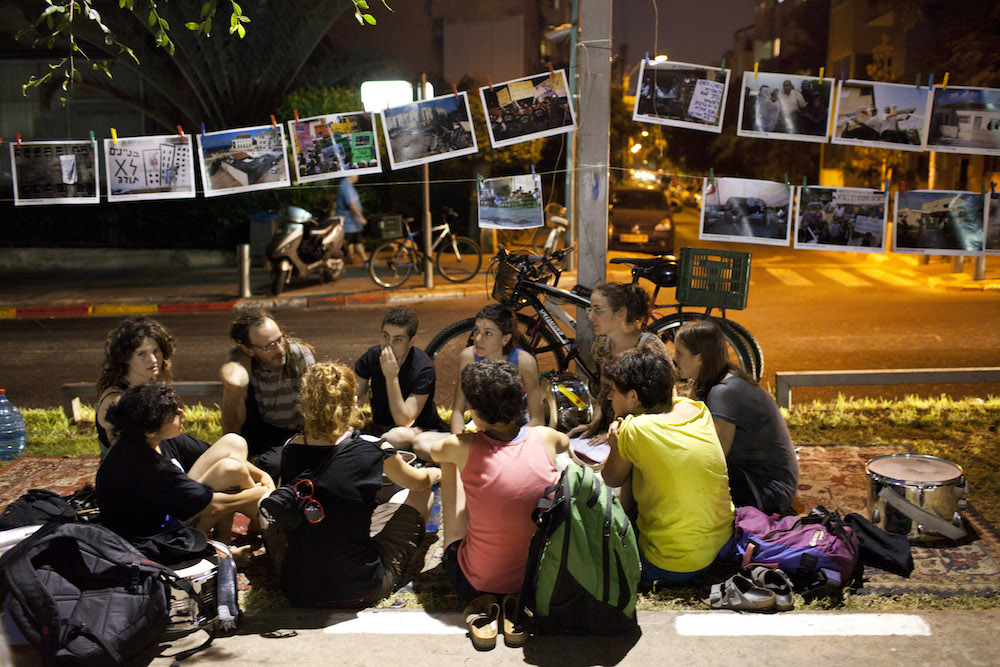
Suddenly a group of twenty-somethings in matching blue shirts approached us. They were members of Im Tirzu, a far-right student group whose raison d’être was to publicly tarnish left-wing leaders and organizations. Before I knew it, a confrontation had ensued. No one was hurt, but the photos were the first casualty — ripped from the clothesline and strewn across the damp grass. That wasn’t mere symbolism; it was a thuggish attempt to censor images that depicted real struggles by real people. To make sure those particular struggles would have no place in the Rothschild festival.
That may have been my first encounter with the power of Activestills, a loose collective of photographers based mostly in Israel and Palestine, but its story started six years earlier with a group of third-year photography students who had been spending their days at protests in Bil’in — the West Bank village that would soon become the flagship of Palestinian nonviolence for years to come. Eleven years later, the group, which has been a partner of +972 Magazine from the beginning, and which has expanded to 13 members who cover a variety of grassroots struggles across the world, has released its first book, Activestills: Photography as Protest in Palestine/Israel.
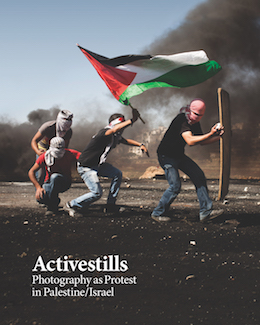 The book, edited by Vered Maimon, a senior lecturer in the Art History Department at Tel Aviv University, and Activestills curator and photo editor Shiraz Grinbaum, is an ode to the past decade of grassroots activism in Israel-Palestine. It is what B’Tselem’s Sarit Michaeli calls, “a radical family photo album of sorts, blending memorable moments from our collective political and personal lives,” which represents the “very essence of our community… in this troubled place.”
The book, edited by Vered Maimon, a senior lecturer in the Art History Department at Tel Aviv University, and Activestills curator and photo editor Shiraz Grinbaum, is an ode to the past decade of grassroots activism in Israel-Palestine. It is what B’Tselem’s Sarit Michaeli calls, “a radical family photo album of sorts, blending memorable moments from our collective political and personal lives,” which represents the “very essence of our community… in this troubled place.”
Maimon and Grinbaum met several years ago in the Art History department upon the former’s return from a decade stint in New York City. Maimon, impressed with the Activestills’ work and vision, decided to invite members of the collective to speak at a seminar on photography and activism. “There was something fascinating about the fact that the collective was made up of photographers who were also activists,” Maimon tells me, “it completely undermined this idea that photography needs to be universal and objective. There is a lot of criticism over the way photojournalism perpetuates social gaps; Activestills came as a response to that: they are part of the struggles they were documenting. The work they produce is intended for the communities to use to promote their own struggles.”
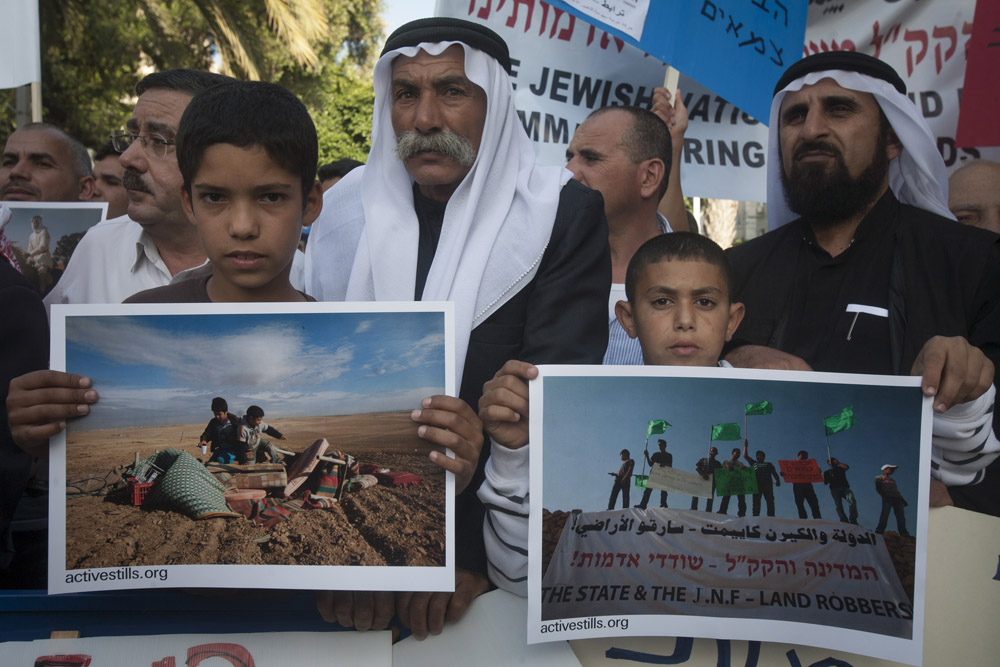
Activestills members view their photography as a vehicle for social and political change, and see their work as part of “the struggle against all forms of oppression, racism, and violations of the basic right to freedom,” according the collective’s statement of purpose. The book, says Grinbaum, does its best to actively reflect that mission.
“It was important for us to place Activestills’ work in the history of photojournalism and documentary photography, and to articulate its idiosyncratic position,” says Grinbaum. “It used to be that the photographer was thought of as external to his work. When we photograph protests, we feel that, above all we are taking an active role in the struggle. We don’t view photography only as testimony to the event — it is part of the struggle itself.”
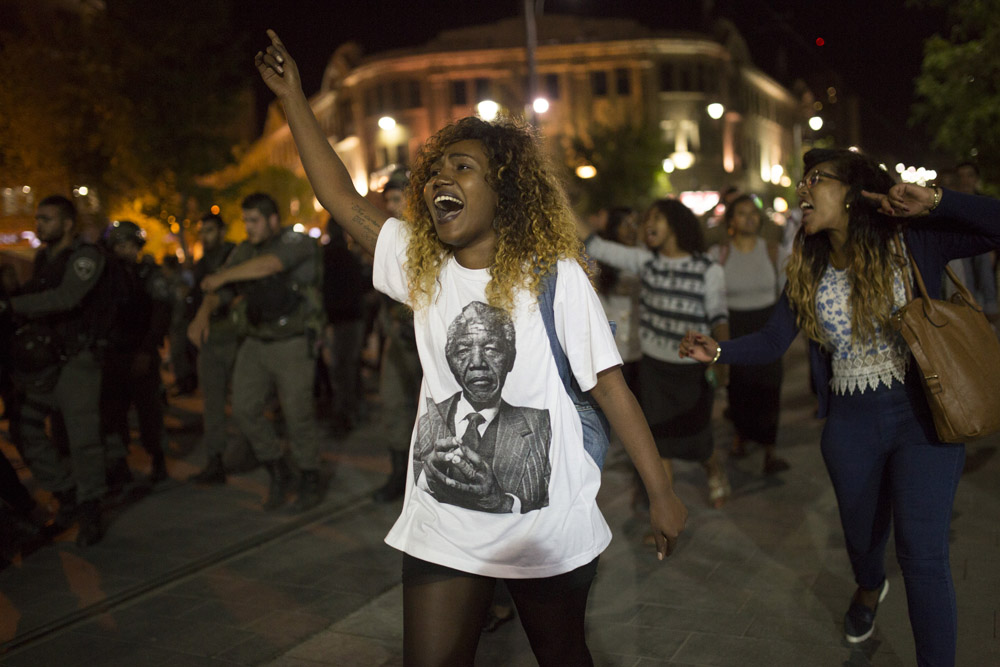
“We wanted to present our subjects not only as ‘victims,’” says Activestills photographer Oren Ziv, “We wanted to show people who were actively leading a struggle. Our choice of where to photograph was driven by which communities we wanted to support – rather than by economic or aesthetic considerations. This started out with the Palestinian struggle, but also extended to other struggles, such as that of asylum seekers and various struggles for housing and economic equality.”
For Maimon, the book was an opportunity to combine activism with academia and field research. “It was clear that we didn’t want the book to be a catalogue, so we decided to combine Activestills’ photography with academic articles and personal testimonies of activists.”
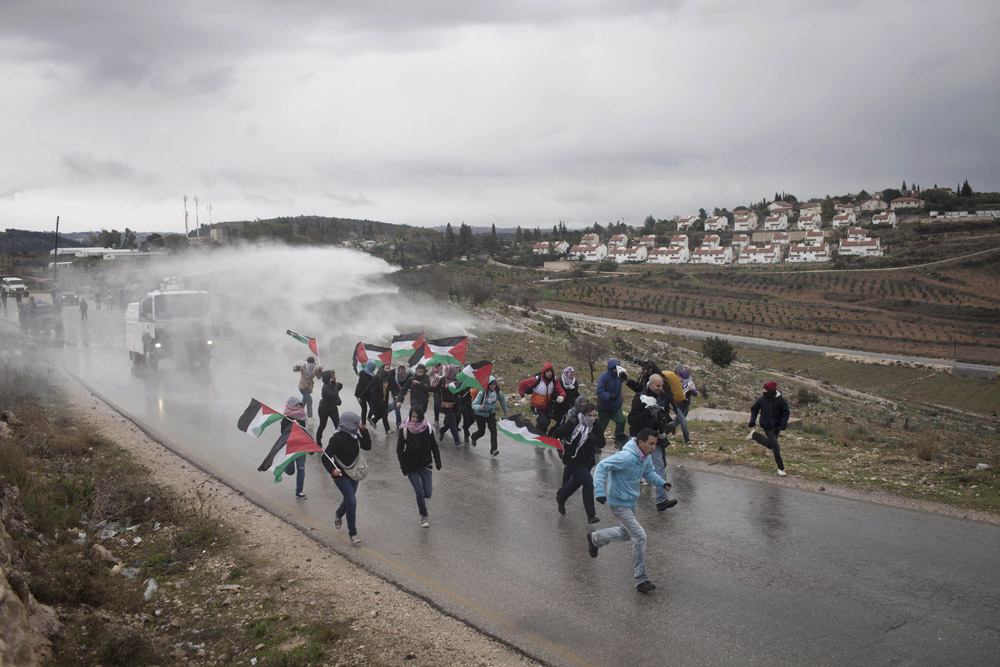
Divided into two sections (“Active” and “Stills”), the book traces the history of the collective, while framing its activities in the context of both local and regional political developments, and using photography theory to shed light on the vital importance of the group’s work in the context of the rapidly changing world of photojournalism. In between the texts are the photographs themselves, which were carefully selected from Activestills’ archive of more than 35,000 photos.
There’s the iconic photo of Bassem Abu Rahmah, who was later killed when he was struck by an Israeli tear gas canister at a nonviolent demonstration in Bil’in, flying a kite as he runs adjacent to the separation barrier that bifurcated his village’s land. Or the shot of Mizrahi families sitting forlornly for a Sabbath dinner in the ruins of their home, after it was demolished by Israeli authorities. Each of the hundreds of photos tells the story of resilience in the face of oppression.
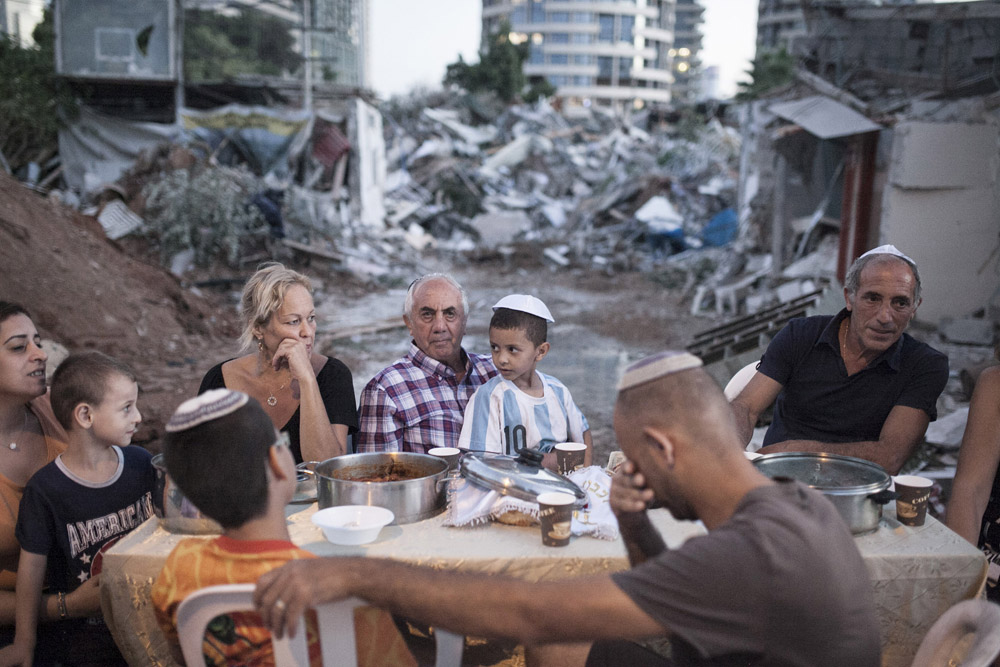
Maimon and Grinbaum made a deliberate choice to format many of the photos in grid form, as a homage to the street exhibitions that were the hallmark of Activestills’ work in the first years of its activity. The photographers would paste and hang their photos in public spaces, rather than galleries, in order to engage Israeli society.
“When we began Activestills, we wanted to have direct contact with the Israeli public,” Ziv says. “By presenting our photography in the street, we were hoping to reach different segments of Israeli society — people who agree with us and disagree with us. We didn’t want our photographs to go up in galleries or community centers, where we would be preaching to the choir.”
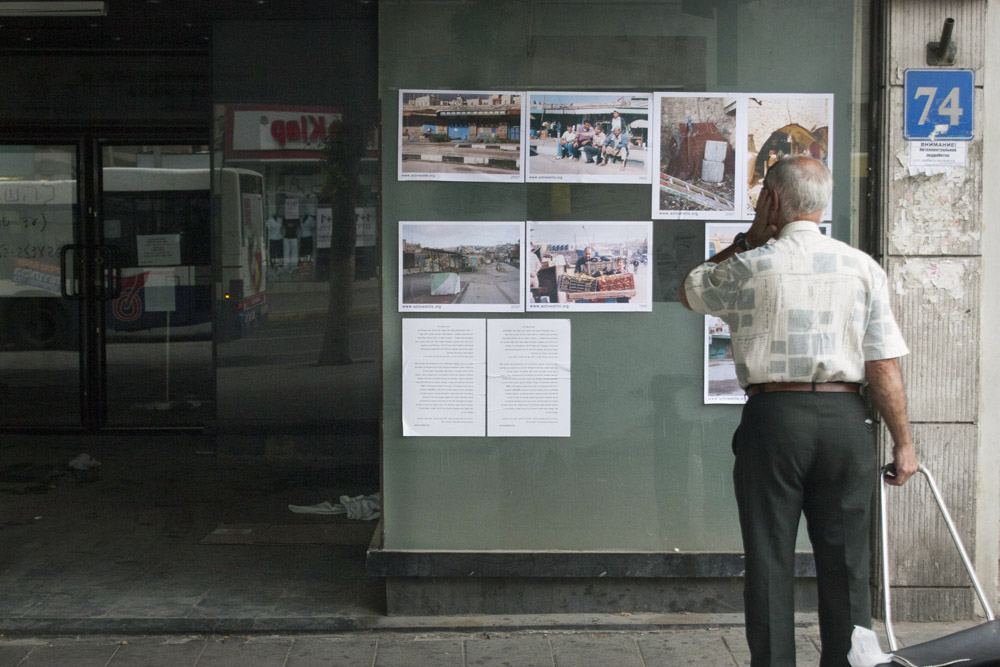
Beyond the photos, the book is full of fascinating interviews with prominent Israeli and Palestinian activists who have been featured in Activestills photos, along with essays by Palestinian, LGBTQ, asylum seeker, Mizrahi, and animal rights activists (including +972’s Haggai Matar, who draws a link between the Palestinian and Mizrahi struggles, and Local Call’s Lilach Ben David who writes on transgender activism). The theoretical essays by academic stalwarts such as Ariella Azoulay, or renowned journalists like Ramzy Baroud, are in my eyes the weakest aspect of the book. While the attempt to fuse academic writing on photography theory with grassroots activism may have been necessary, the use of opaque and scholastic language seems divorced from the stark reality facing those outside the ivory tower.
The final (and most touching) part of the book features essays by Activestills members themselves about their reasons for joining the collective. Ahmad al-Bazz writes about joining despite his initial reservations about taking part in initiatives that potentially “normalize” the unequal power relations between Israelis and Palestinians under occupation. Anne Paq’s harrowing essay on her “Obliterated Families” project, which documented the Gaza families wiped out during the 2014 war, is another standout.
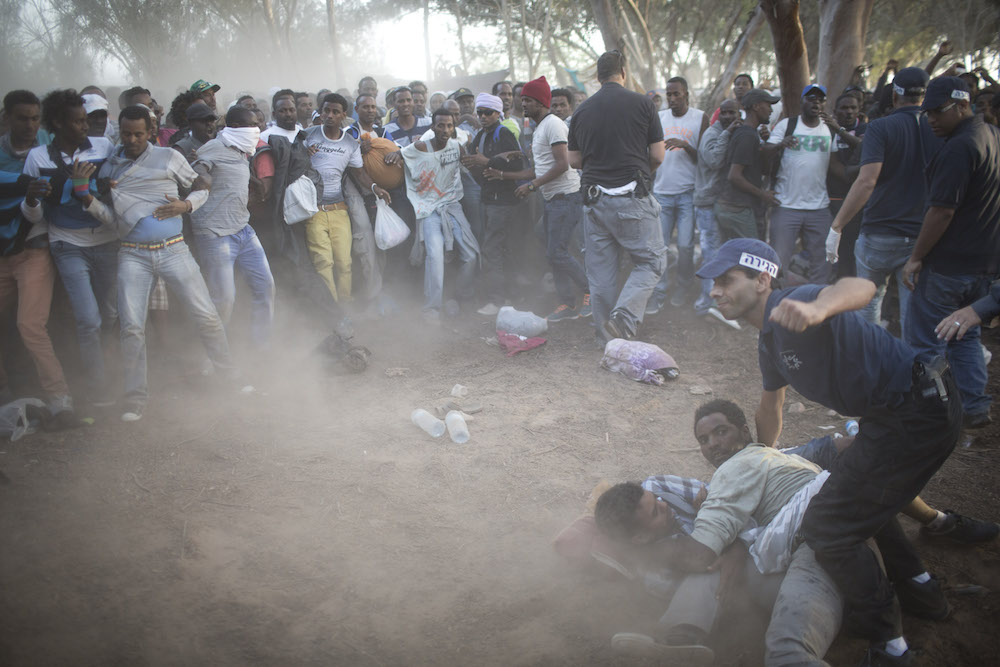
Beyond creating a “radical family photo album,” the book sets out to push readers, whether activists or academics, out of their comfort zones. “My hope is that the book raises awareness about all social struggles that have taken place here over the past 10 years – while opening up new ways to think about what else can we do to continue them,” says Maimon. “Mostly I hope that it pushes academics to create connections with activists in order to maintain the public sphere as an equal space inclusive of all kinds of voices.”
Grinbaum goes one step further: “This is not just a compilation. It is a call to action.”
The book is launching at a four-day exhibition (January 4th – 7th) in Tel Aviv at the Minshar School of Art. View the Facebook event, and see you there.

